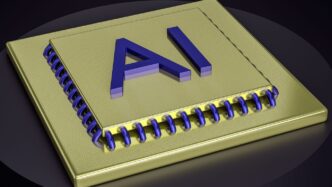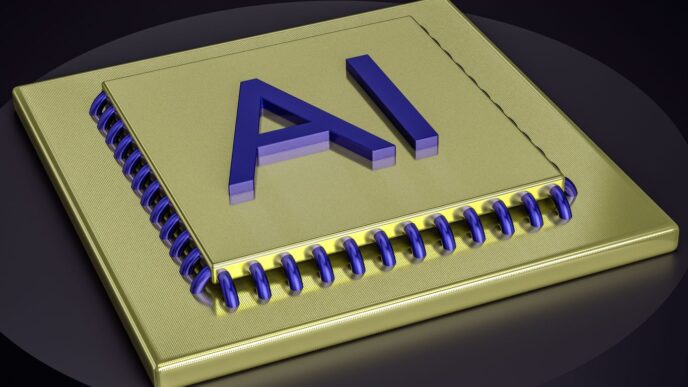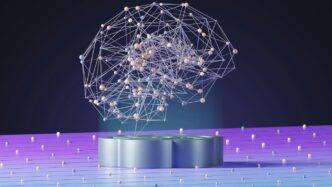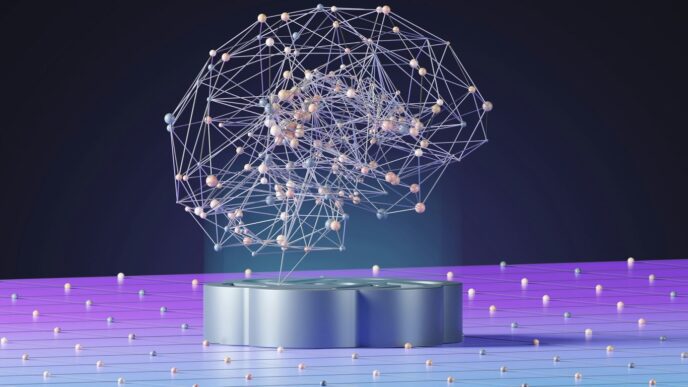So, everyone’s talking about Google’s quantum computer, right? Like, how fast is Google’s quantum computer, really? Back in 2019, Google made a big splash, saying they hit something called ‘quantum supremacy.’ It sounds super sci-fi, but basically, it means their quantum machine did something way faster than even the best regular computers. But what does that actually mean for us? And how does this crazy tech even work? Let’s break it down, because it’s a bit more complicated than just flipping a switch.
Key Takeaways
- Google’s quantum computer, Sycamore, showed off its speed in 2019, doing a calculation in minutes that would take regular supercomputers a very, very long time.
- Unlike regular computers that use bits (0s or 1s), quantum computers use ‘qubits’ which can be both 0 and 1 at the same time, letting them process information in a totally different way.
- While Google’s early quantum chip, Sycamore, was a big step, it’s still kind of experimental, and we need even more powerful quantum systems for everyday uses.
- Google is pouring lots of money into quantum tech, aiming for a super-advanced quantum computer by 2029, and they’ve already shown it can do things like simulate chemical reactions.
- The idea of quantum computing, especially with chips like Willow, even brings up wild theories about parallel universes and could change things like cybersecurity forever.
Understanding Quantum Supremacy
Defining Quantum Supremacy
Okay, so what is quantum supremacy? Basically, it’s the point where a quantum computer can do a specific calculation that no classical computer could accomplish in a reasonable amount of time. We’re talking about problems that would take the world’s best supercomputers thousands of years, but a quantum computer could crack in minutes. It’s not about quantum computers being better at everything, just certain very specific tasks. Think of it like this: a regular computer is like a scooter, great for getting around town. A quantum computer is like a rocket – useless for groceries, but amazing for getting to the moon. The idea is to show that quantum computers aren’t just a cool theory, but a real, practical technology with the potential to solve problems we can’t even touch today. This is a big deal because it validates years of research and investment in quantum computing. It’s like saying, "Hey, this crazy idea actually works!"
Google’s Initial Claim of Speed
In 2019, Google made a splash by claiming they’d achieved quantum supremacy with their Sycamore processor. They said Sycamore had performed a specific calculation in about 200 seconds that would take the world’s most powerful supercomputer, Summit, around 10,000 years. That’s a huge difference! This announcement marked a significant milestone in the field. The calculation involved random number generation, which is surprisingly complex for classical computers. Google’s claim was met with both excitement and skepticism. It was a landmark moment, but also a starting point for further research and development. It showed the potential of quantum computers, but also highlighted the challenges that still lie ahead.
Challenging the Quantum Supremacy Claim
Not everyone agreed with Google’s assessment. IBM, the company behind the Summit supercomputer, argued that Summit could actually perform the same calculation in about 2.5 days, not 10,000 years, with some clever algorithm tweaks and extra storage. That’s still slower than Sycamore, but it significantly narrowed the gap. This highlights a key point: quantum supremacy isn’t a fixed target. As classical algorithms and hardware improve, the bar for quantum supremacy keeps rising. It’s a constant race between classical and quantum computing. Plus, the specific problem Google chose was designed to be difficult for classical computers, but not necessarily useful in the real world. So, while Google’s demonstration was impressive, it didn’t immediately translate into practical applications. The debate continues, but it’s pushing both quantum and classical computing forward. It’s all part of the scientific process, challenging assumptions and pushing the boundaries of what’s possible.
How Google’s Quantum Computer Works
Introducing the Sycamore Processor
Google’s quantum computer hinges on its quantum processor, known as Sycamore. The initial design aimed for a 54-qubit processor, but due to a failure, it operated with 53 qubits. This processor is the heart of Google’s quantum computing efforts. It’s designed to perform calculations in a fundamentally different way than traditional computers.
Bits Versus Qubits
To understand how Sycamore works, it’s helpful to contrast it with classical computers. Classical computers, from your phone to supercomputers, use bits. Bits are binary, representing either a 1 or a 0. Quantum computers, however, use qubits. Unlike bits, qubits can exist in multiple states simultaneously. This difference is key to the power of quantum computing. The Sycamore processor leverages this capability to perform complex calculations.
The Concept of Superposition
The ability of a qubit to exist as both 1 and 0 at the same time is called superposition. This means a qubit can be in an infinite number of states. This dramatically increases the ways a computer can process information. Imagine it like this:
- A bit is like a light switch: either on or off.
- A qubit is like a dimmer switch: it can be on, off, or anywhere in between.
- This "in-between" state allows for much more complex calculations.
However, harnessing this power for practical applications is still a challenge. While the 53-qubit Sycamore chip was a significant step, researchers need systems with hundreds or even thousands of qubits to tackle real-world problems. Overcoming quantum system noise is also a major hurdle.
The Sycamore Processor’s Capabilities
Initial Qubit Count and Functionality
So, Google’s Sycamore processor. It started out as a 54-qubit processor, but, bummer, one of those qubits didn’t make the cut. That left them with 53 qubits to actually work with. The whole idea was to show that a quantum computer could do something way faster than any regular computer. Google claimed it did, but, well, not everyone agreed. Still, it got people talking about the potential of quantum processors.
Limitations of Current Qubit Systems
Okay, so here’s the thing: even with Sycamore’s achievement, we’re still pretty far from having quantum computers that can solve all our problems. The 53-qubit chip has limits. Like, researchers are saying we need systems with way more qubits – like 100 or even 200 – before we can really start testing them for practical uses. Plus, keeping these qubits stable and working correctly is a huge challenge. It’s not as simple as just adding more qubits; you’ve got to manage all sorts of weird quantum stuff to make it work. Error correction is a big deal in quantum computing.
The Path to Practical Applications
Even though there are hurdles, Google’s still pushing forward. They’re aiming to have a functional, error-free quantum computer by 2029. That’s a big goal, and it means pouring a ton of money into development. But it’s not just about building a powerful computer; it’s about finding real-world problems that quantum computers can actually solve better than regular computers. Think about simulating chemical reactions or designing new materials. That’s where the real potential lies. It’s a long road, but the first steps have been taken.
Google’s Vision for Quantum Computing
Long-Term Development Goals
Google isn’t just playing around with qubits; they’re in it for the long haul. Their aim is to create a fully functional, error-corrected quantum computer. Back in 2021, they announced a plan to achieve this by 2029. It’s a bold claim, but they seem pretty serious about it. This involves not just increasing the number of qubits, but also making them stable and reliable enough to perform complex calculations. Think of it like building a skyscraper – you can’t just stack bricks; you need a solid foundation and a way to keep everything aligned. Google’s quantum computing roadmap is ambitious, but if they pull it off, it could revolutionize everything from medicine to materials science.
Investment in Quantum AI Campus
To show they mean business, Google has put its money where its mouth is. They’ve invested heavily in a state-of-the-art quantum AI campus in Santa Barbara. This isn’t just a lab; it’s a dedicated space for quantum research and development. It’s like building a Formula 1 race track – you need the right facilities to push the limits of performance. The campus is designed to foster collaboration between researchers, engineers, and other experts, all working towards the same goal: building a practical quantum computer. Google’s goal is to build a system containing 1 million physical qubits. It’s quite an ambitious target, but not impossible, if the company’s words are anything to go by.
Simulating Chemical Reactions with Qubits
It’s not all just theory and hardware; Google is also exploring practical applications for quantum computing. One promising area is simulating chemical reactions. In 2020, they used a 12-qubit chip to simulate a chemical reaction, proving that quantum computers could potentially solve real-world problems. This is a big deal because simulating chemical reactions is incredibly complex for classical computers. Quantum computers, with their ability to handle superposition and entanglement, could potentially do it much more efficiently. Imagine being able to design new drugs or materials with atomic precision – that’s the kind of potential we’re talking about. The simulation, known as the Hartree-Fock, is a major milestone.
The Willow Chip and Parallel Universes
Introducing the Willow Quantum Chip
Google’s Willow chip is a big deal. It’s not just another incremental upgrade; it’s a potential game-changer that’s making some scientists rethink what’s possible. On December 9, 2024, Google dropped some serious news: Willow could handle calculations that would take regular computers longer than the universe has even existed to complete. That’s wild! Some folks at Google, including Hartmut Neven, think this speed is only possible if the computer is tapping into computations happening across parallel universes. They’ve been working on real-time error correction using size scaling of qubits, which might be what’s making these parallel universes actually useful in our reality. Google claims they’ve cracked the code on dealing with quantum system noise, which has always been a huge roadblock.
The Theory of Parallel Universe Computation
So, how could a quantum computer use parallel universes? Well, the theory goes that every quantum event creates a split, resulting in a whole new universe for each possible outcome. Imagine a reality where every choice you make spawns a new universe. It’s mind-bending stuff. Some think Willow might be creating tiny wormholes to these other universes to crunch numbers. This idea messes with the traditional view of a single universe where measurements dictate everything. It also challenges our understanding of time, suggesting that past, present, and future might all exist at once.
Overcoming Quantum System Noise
One of the biggest hurdles in quantum computing is dealing with noise. Quantum systems are super sensitive to things like stray particles and vibrations. Google claims their recent advancements in real-time error correction have made it possible to overcome this noise. This is a huge step because it means that quantum computers can actually perform complex calculations without being constantly disrupted. With these advancements, the possibility of quantum supremacy becomes more realistic. Now that Google has proof of concept, they plan to build massive stacks of super-cooled quantum computers. It’s exciting to think about what they’ll be able to do with a million qubits!
Quantum Mechanics and Qubit Behavior
Superposition and Entanglement Explained
Okay, so quantum mechanics can be a bit of a head-scratcher, but let’s try to break down how it relates to qubits. Regular computer bits are either a 0 or a 1, simple as that. But qubits? They’re living in the quantum world, which means they can be both 0 and 1 at the same time. This is called superposition. Think of it like a coin spinning in the air – it’s neither heads nor tails until it lands. This ability to exist in multiple states simultaneously is what gives quantum computers their potential power.
Then there’s entanglement. Imagine two of those spinning coins, but somehow, they’re linked. If one lands on heads, the other instantly lands on tails, no matter how far apart they are. That’s entanglement. Qubits can be entangled, meaning their states are linked, and measuring one instantly tells you something about the other. It’s like they’re communicating faster than light, which brings us to…
Einstein’s ‘Spooky Action at a Distance’
Einstein wasn’t a huge fan of entanglement. He famously called it "spooky action at a distance" because it seemed to violate the laws of physics, specifically the speed of light. How could two particles be instantly connected across vast distances? It just didn’t sit right with him. But, despite his skepticism, entanglement has been proven time and again in experiments. We might not fully understand how it works, but we know it’s real. It’s one of those weird quantum things that scientists are still trying to wrap their heads around. It’s like alternate history playing out in real time, defying our classical understanding of the universe.
The Speed of Light and Quantum Phenomena
So, does entanglement actually break the speed of light? Well, not exactly. The current understanding is that while the states of entangled particles are correlated, no actual information is being transmitted faster than light. It’s more like knowing the outcome of one instantly tells you the outcome of the other, but you can’t use it to send a message. The map of this circuit is complex, but the information transfer isn’t violating any cosmic speed limits. Think of it this way: if you and a friend each have a box, and you know one box contains a red ball and the other a blue ball, opening your box and seeing the red ball instantly tells you your friend has the blue ball, but no information was sent between you faster than light. It’s a subtle but important distinction. Quantum computers use quantum entanglement to link qubits, enabling them to function as an interconnected system. The state-of-the-art quantum AI campus is pushing the boundaries of what’s possible, even if it means grappling with some seriously strange physics.
Future Implications of Quantum Computing
Potential for Inter-Universal Communication
Okay, so, inter-universal communication sounds like something straight out of a sci-fi movie, right? But with quantum computers like Google’s Willow, some researchers are starting to wonder if it’s actually possible. The idea is that these computers might be able to create some kind of bridge, like tiny wormholes, between universes. It’s a wild concept, and it definitely challenges how most scientists think about the universe. Whether or not it’s true, it’s pushing the boundaries of what we thought was possible.
Google’s Goal for Practical Applications
Google isn’t just building quantum computers for fun; they want to use them to solve real-world problems. They’re aiming to release practical applications by the end of this decade, maybe even sooner with the help of AI. What kind of applications? Well, think about simulating chemical reactions to design better batteries or develop new drugs. Or maybe even understanding the design of nuclear fusion reactors. The possibilities are pretty huge. Google has already invested in a quantum AI campus to help make this happen.
Competition in the Quantum Computing Race
Google might be leading the pack right now, but they’re not the only ones in the quantum computing race. IBM, Amazon, Microsoft, and even countries like China are all working on their own quantum computers. This competition is pushing everyone to innovate faster, which is good for the field as a whole. But it also raises some concerns about who will control this powerful technology and how it will be used. It’s a race to impressive efforts, and the stakes are high.
The Dark Side of Quantum Computing
Threats to Cybersecurity and Encryption
Quantum computing’s awesome power isn’t all sunshine and rainbows. There’s a definite dark side brewing, especially when it comes to cybersecurity. The biggest worry? Quantum computers could crack current encryption methods like they’re made of paper. Imagine all our secure communications, financial systems, and even cryptocurrencies like bitcoins suddenly vulnerable. It’s a scary thought.
Weaponization of Quantum Technology
It’s not just about breaking codes. Quantum tech could be weaponized. Think about it: nations racing to develop quantum-powered weapons or using quantum computers to enhance existing military capabilities. It’s like a new arms race, but with code and qubits instead of missiles and tanks. The U.S. Department of Defense is definitely paying attention, as evidenced by their report to Congress, Military and Security Developments Involving the People’s Republic of China. They’re watching China’s advancements in AI and quantum computing very closely, especially their potential use in "intelligentized warfare."
Global Race for Quantum Dominance
We’re already seeing a global scramble for quantum supremacy. Countries are pouring money into research, development, and talent acquisition. It’s a high-stakes game, and the winner could control the future of technology, security, and even the global economy. China’s efforts are impressive, and some suspect they’re trying to steal Google’s breakthroughs to boost their own impressive efforts. It’s a race against time, and the implications are huge.
Conclusion
So, what’s the real deal with Google’s quantum computer? It’s pretty clear it’s a big step forward, even if the initial claims got a bit walked back. The fact that these machines can do things regular computers can’t, even if it’s just for random numbers right now, shows a lot of promise. We’re still a ways off from quantum computers being in our homes or solving all the world’s problems. But the progress is happening, and it’s happening fast. It’ll be interesting to see what comes next, especially with all the money and smart people working on it. The future of computing is definitely going to be different, that’s for sure.
Frequently Asked Questions
What is quantum supremacy?
Quantum supremacy means a quantum computer can solve problems that even the fastest normal computers can’t handle. Google announced in 2019 that their quantum computer, Sycamore, reached this point by doing a calculation in 200 seconds that would take a supercomputer 10,000 years. This showed how much faster quantum computers could be.
How does Google’s quantum computer work?
Google’s quantum computer uses a special chip called Sycamore. Unlike regular computers that use bits (which are either 0 or 1), quantum computers use ‘qubits.’ Qubits are special because they can be 0, 1, or both at the same time. This ‘both at once’ trick, called superposition, lets quantum computers do many calculations much faster than regular computers.
What are the Sycamore processor’s abilities?
The Sycamore processor started with 54 qubits, but one didn’t work, so it used 53. While this was a big step, current quantum computers are still limited. Scientists need systems with 100 or 200 qubits to start solving more practical, real-world problems. It’s a journey, and we’re still in the early stages.
What are Google’s plans for quantum computing?
Google wants to build a quantum computer that works perfectly and has a million qubits by 2029. They are investing a lot of money and even built a special campus for quantum AI. Their goal is to use these powerful computers for things like understanding chemical reactions, which could help create new medicines or materials.
What is the Willow chip, and what’s this about parallel universes?
The Willow chip is Google’s newer quantum chip. Some scientists at Google think its incredible speed might be because it’s somehow using calculations from ‘parallel universes.’ They also say they’ve found ways to fix problems caused by tiny disturbances, which used to be a big challenge for quantum systems.
What are the good and bad things about quantum computing?
Quantum computing could change many things, from medicine to new materials. Google hopes to have useful quantum applications ready by the end of this decade. However, there’s also a ‘dark side’: quantum computers could break current internet security and encryption, leading to new threats. Many countries are racing to develop this technology, which could affect global power.














